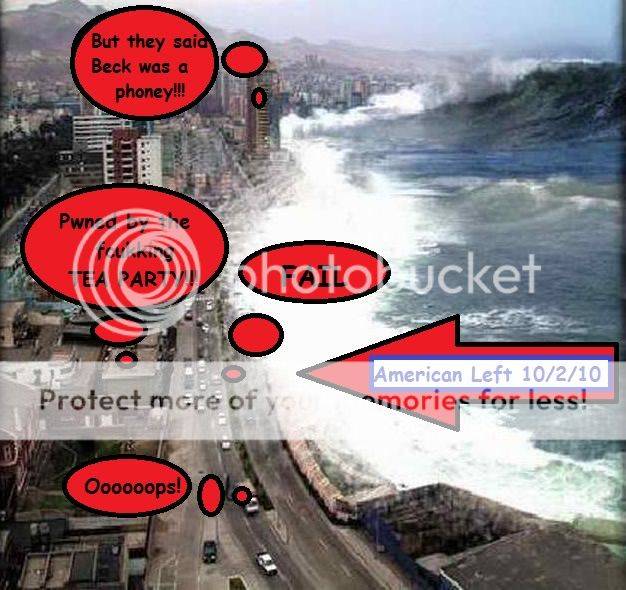bobgnote
Rookie
- Nov 24, 2008
- 1,258
- 38
- 0
- Banned
- #1
Some think NOLA goes down, first.
Others think Virginia and North Carolina areas will go under, next.
Other people think Florida will be swamped, since it has been suffering a drought, and when it gets flooded, sink-holes form, to collapse, under whatever wash-over comes along.
Let's get this started, since here comes SLR!
Scientists warn US east coast over accelerated sea level rise | Environment | guardian.co.uk
Sea level rise is accelerating three to four times faster along the densely populated east coast of the US than other US coasts, scientists have discovered. The zone, dubbed a "hotspot" by the researchers, means the ocean from Boston to New York to North Carolina is set to experience a rise up a third greater than that seen globally.
Asbury Sallenger, at the US geological survey at St Petersburg, Florida, who led the new study, said: "That makes storm surges that much higher and the reach of the waves that crash onto the coast that much higher. In terms of people and communities preparing for these things, there are extreme regional variations and we need to keep that in mind. We can't view sea level rise as uniform, like filling up a bath tub. Some places will rise quicker than others and the whole urban corridor of north-east US is one of these places."
The hotspot had been predicted by computer modelling, but Sallenger said: "Our paper is the first to focus on using real data to show [the acceleration] is happening now and that we can detect it now."
The rapid acceleration, not seen before on the Pacific of Gulf coasts of the US, may be the result of the slowing of the vast currents flowing in the Altantic, said Sallenger. These currents are driven by cold dense water sinking in the Arctic, but the warming of the oceans and the flood of less dense freshwater into the Arctic from Greenland's melting glaciers means the water sinks less quickly. That means a "slope" from the fastest-moving water in the mid-Atlantic down to the US east coast relaxes, pushing up sea level on the coast.
"Coastal communities have less time to adapt if sea levels rise faster," said Stefan Rahmstorf, at the Potsdam Institute Germany, who published a separate study in the same journal, Nature Climate Change, on Sunday. Rahmstorf's team showed that even relatively mild climate change, limited to 2C, would cause global sea level to rise between 1.5 and 4 metres by the year 2300. If nations acted to cutting carbon emissions so the temperature rise was only 1.5C, the sea level rise would be halved, the researchers found.
--------------------
Yeah, right. They keep bandying carbon trade, when CO2-biomass needed to be here, yesterday, in at least the form of legal hemp and widely grown switchgrass. But noooo! We have Obamacare, finally reviewed, before SCOTUS, and it might go under, before Florida does.
We need a re-greening plan, for every desert, every polluted land and water area, in the world. But noooo. We have support for fascist Israel, Taiwan, Bahrain, and other tyrants, with drones killing, but defense money, running out, while poisonous fracking is debated, and it is neither regulated nor banned, outright, like it ought to be.
Humans are not smart men, or women, generally, where wingnuts and Obama-geeks predominate. We need to cut the carbon footprint, of fascism and special-interest socialists, to achieve re-greening.
Who's going down? Review it, here. But Virginia and North Calinkey pubs won't let rats or anybody else call it SLR, which we should also review, while going down, to higher tides.
Others think Virginia and North Carolina areas will go under, next.
Other people think Florida will be swamped, since it has been suffering a drought, and when it gets flooded, sink-holes form, to collapse, under whatever wash-over comes along.
Let's get this started, since here comes SLR!
Scientists warn US east coast over accelerated sea level rise | Environment | guardian.co.uk
Sea level rise is accelerating three to four times faster along the densely populated east coast of the US than other US coasts, scientists have discovered. The zone, dubbed a "hotspot" by the researchers, means the ocean from Boston to New York to North Carolina is set to experience a rise up a third greater than that seen globally.
Asbury Sallenger, at the US geological survey at St Petersburg, Florida, who led the new study, said: "That makes storm surges that much higher and the reach of the waves that crash onto the coast that much higher. In terms of people and communities preparing for these things, there are extreme regional variations and we need to keep that in mind. We can't view sea level rise as uniform, like filling up a bath tub. Some places will rise quicker than others and the whole urban corridor of north-east US is one of these places."
The hotspot had been predicted by computer modelling, but Sallenger said: "Our paper is the first to focus on using real data to show [the acceleration] is happening now and that we can detect it now."
The rapid acceleration, not seen before on the Pacific of Gulf coasts of the US, may be the result of the slowing of the vast currents flowing in the Altantic, said Sallenger. These currents are driven by cold dense water sinking in the Arctic, but the warming of the oceans and the flood of less dense freshwater into the Arctic from Greenland's melting glaciers means the water sinks less quickly. That means a "slope" from the fastest-moving water in the mid-Atlantic down to the US east coast relaxes, pushing up sea level on the coast.
"Coastal communities have less time to adapt if sea levels rise faster," said Stefan Rahmstorf, at the Potsdam Institute Germany, who published a separate study in the same journal, Nature Climate Change, on Sunday. Rahmstorf's team showed that even relatively mild climate change, limited to 2C, would cause global sea level to rise between 1.5 and 4 metres by the year 2300. If nations acted to cutting carbon emissions so the temperature rise was only 1.5C, the sea level rise would be halved, the researchers found.
--------------------
Yeah, right. They keep bandying carbon trade, when CO2-biomass needed to be here, yesterday, in at least the form of legal hemp and widely grown switchgrass. But noooo! We have Obamacare, finally reviewed, before SCOTUS, and it might go under, before Florida does.
We need a re-greening plan, for every desert, every polluted land and water area, in the world. But noooo. We have support for fascist Israel, Taiwan, Bahrain, and other tyrants, with drones killing, but defense money, running out, while poisonous fracking is debated, and it is neither regulated nor banned, outright, like it ought to be.
Humans are not smart men, or women, generally, where wingnuts and Obama-geeks predominate. We need to cut the carbon footprint, of fascism and special-interest socialists, to achieve re-greening.
Who's going down? Review it, here. But Virginia and North Calinkey pubs won't let rats or anybody else call it SLR, which we should also review, while going down, to higher tides.









